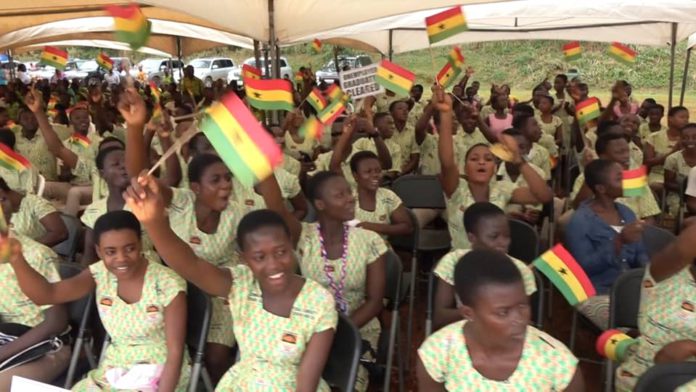School selection processes by fresh graduates of Junior High Schools commenced Monday, September 21, 2020, and is scheduled to end October 31, 2020.
Two officials in-charge of the Computerised School Selection and Placement System (CSSPS) from the Education Ministry in an interview on Adom FM’s Dwaso Nsem Thursday, explained into detail how the school placement system works and highlighted on the frequent mistakes made by students in the selection process.
Categorisation of Schools
According to Rodney Nkrumah Boateng – one of the officials who spoke on the show – all 722 Senior High Schools (SHS) across the country have been categorised into five.
Category A, he says, is made up of the big or popular SHSs and Category B, C, D and E which constitute only technical and vocational schools. A student in the school selection process is expected to choose in total five schools – a school from each category.
However, in choosing a single Category A school and two category B schools, students have the option to choose as much as three or more from the Category C and E schools.
Speaking further in the interview, Mr Boateng noted that out of the total 722 SHSs in the country – excluding technical and vocational schools – 73 are Category A schools, 232 are Category B and 417 are Category C.
Category D, he noted, is an umbrella category for all 722 SHSs which are available for selection by students who for one reason or the other might not be able to secure their school of choice.
Mr Boateng explained that a student can select his first choice of school (already selected in Category A) – from Category D just in case he or she fails to land his or her first school choice.
Schools in Category D, however, can be selected by students who live within a 16 km radius of the school and can only be admitted as day students to the selected schools.
Why some students do not get their first choice schools
Mr Boateng asserted that the inability of students to land their first choice schools is through no fault of the school placement system.
According to him, the limited space available in the Category A schools as against the huge number of students who select such schools, mainly accounts for students’ inability to get their first-choice schools.
Putting that aside, some ‘sieving’ processes employed by the system account for the phenomenon.
Mr Boateng noted that, although majority of the students had gotten excellent grades and qualified to be admitted into first-choice schools due to the limited number of space available for admission, the system employs a ‘sieving’ process to get admission for students with the best performance.
“To find placement in the school for some of the students, the system first looks at those who had nine 1s, then eight 1s, seven 1s and so on. So probably, by the time it gets to students who had six 1s, there might not be space in the school. The school might be full,” he noted.
“Then assuming that even after this process, there is still space in the school and there are still students that need to be placed in the school, the system then looks at the raw score of the student’s grades, then the course programme selected and then finally the student’s performance in the four core subjects – Mathematics, English, Science and Social Studies.
“So although the student had very good grades, by the time the system does all these, there might not be space available in the school for the student. So the system then moves to the student’s second school choice and begins the same process,” he added.
Parents’ non-involvement in school selection process cause of wards’ woes
Mr Boateng urged parents to participate in the school selection process of their wards to avoid the numerous problems that arise after school placements are done.
He asserted that parents often leave the school selection process to their wards and teachers which is wrong.
Referring to the chaotic scene at the Black Star Square last year over the school placement, Mr Boateng faulted parents’ negligence of the selection process as being one of the major causes for the situation aside certain technical challenges encountered by the Ministry.

